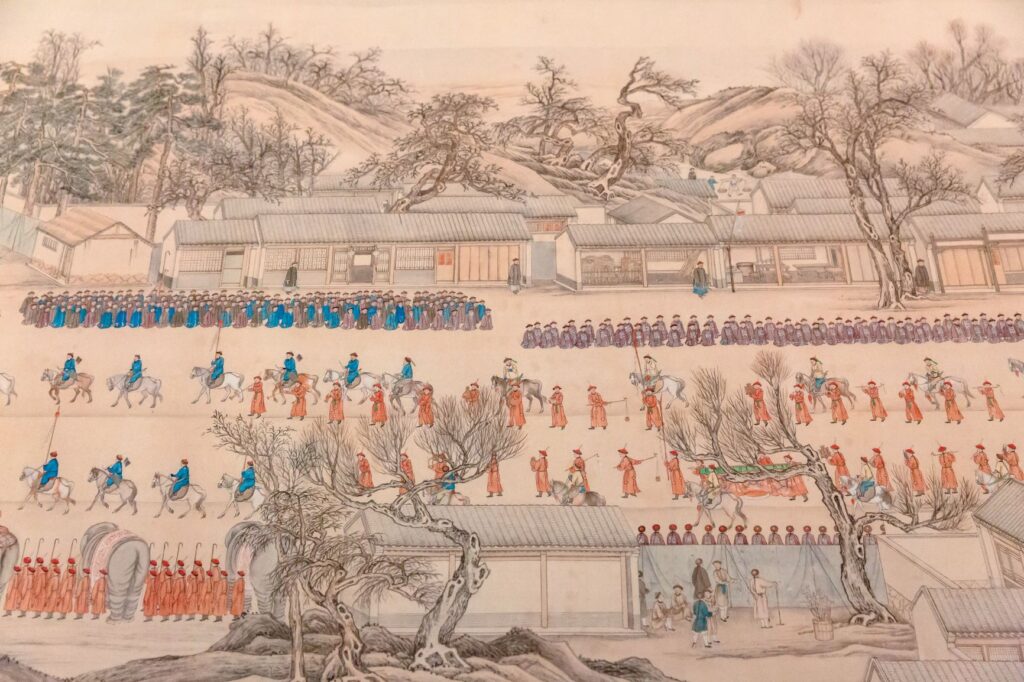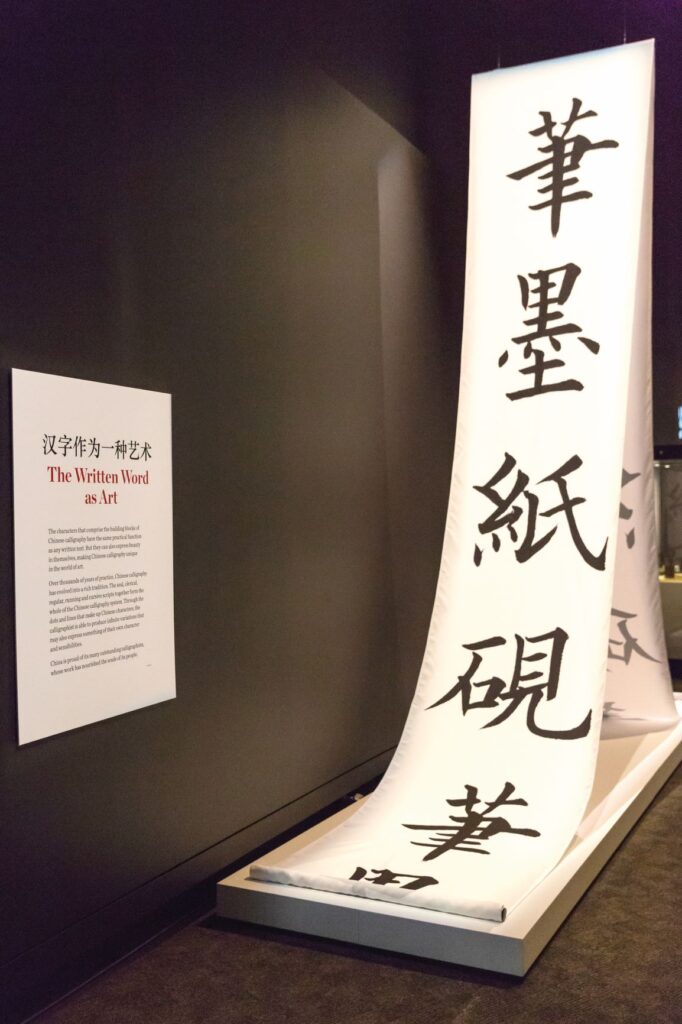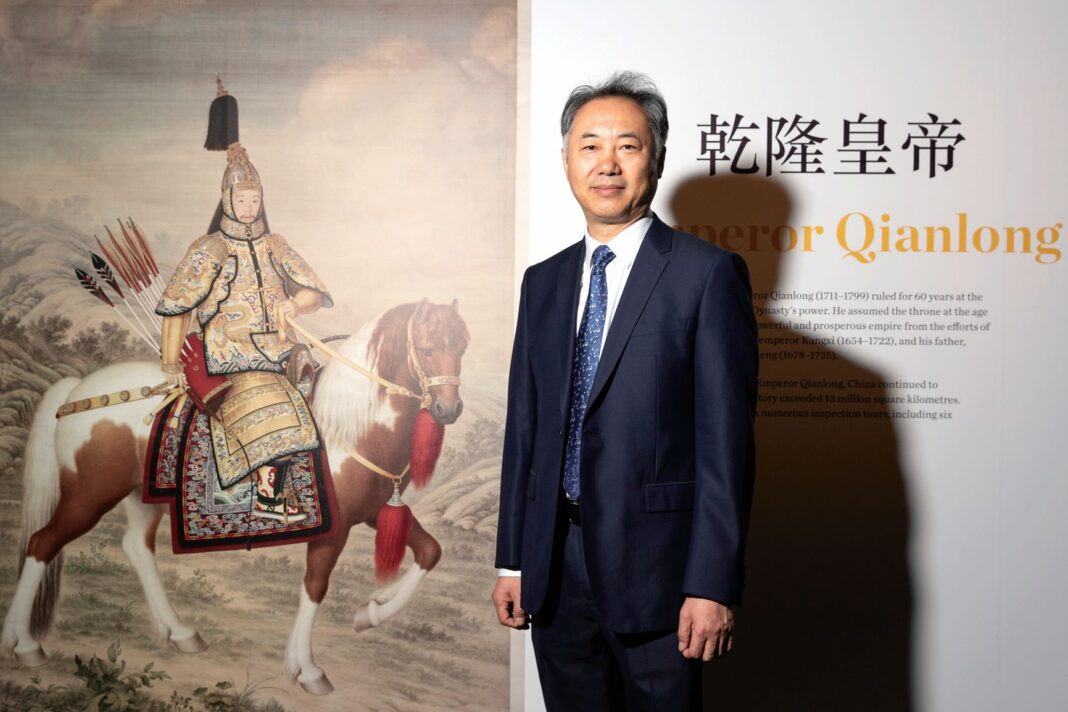An Australian-first exhibition showcasing a grand historical sweep of Chinese art and calligraphy traditions spanning from the Qing dynasty through to the modern day has opened at the National Museum of Australia (NMA).
The Historical Expression of Chinese Art: Calligraphy and Painting from the National Museum of China features more than 100 works, including over 70 from the National Museum of China (NMC), and showcases their cultural traditions of calligraphy, ink painting and watercolour.
The exhibition’s two centerpieces are a rare, high-quality replica of part of Emperor Qianlong’s Southern Inspection Tour scroll, and an enthralling 14-metre-wide animated digital experience of the scroll at the rear of the exhibition space that brings the work to life in intricate moving detail.
Emperor Qianlong’s 1751 tour of south China, upon which the work is based, was an epic journey which took 112 days and saw him cover 2,900km as a way of managing his vast empire.

The exhibition connects the art of Wang Naizhuang, Xiao Lang and Xie Yun – all acclaimed contemporary Chinese artists, with the ancient traditions from which their practices have been derived.
“In this exhibition, you get a sense of the way that the modern art of China is represented in the works on walls are connected to these traditions of calligraphy, ink painting and scroll making,” says NMA Director Dr Matthew Trinca.
“Ways that, I think, show the lineage and the sense of age of these practices in Chinese life and society.”
Trinca says he sees the exhibition as an accessible way for the Chinese story to be told in Australia to Australians.
“When we open ourselves up to the lives of others through exchanges like this, we learn about the peoples of their country, and we also learn something about ourselves and what it means to live in our country.
“Audiences will be both enchanted by the sweeping animated experience at the heart of the show, which brings historical figures to life before their eyes, and be delighted by the vitality and beauty of ink painting today, with its connections to centuries old traditions of calligraphy,’ he says.
Old Masters: Australia’s Great Bark Artists, opened in China at the NMC in July 2018, and featured one of the NMA’s signature collections. It was the most significant collection of Aboriginal barks to tour China.

Both Old Masters and The Historical Expression of Chinese Art are just two byproducts of a cultural exchange dating back to an MOU signed between the two institutions in 2011.
Liu Gang, Director of the Institute of Calligraphy and Painting at the NMC, told Canberra Daily he’s thrilled that the longstanding collaboration between the institutions has now borne fruit.
“This magnificent exhibition is the fruit of our collaboration and the work of both the museums together and it will give you a taste of what the Chinese culture is like.
“We’re hoping through this exhibition, Australian audiences will get a sense of Chinese philosophy and how Chinese people think.
“The essence of Chinese culture can be presented through calligraphy and painting, we are hoping that through showcasing these works we give the audience a taste of the works with a more oriental feel.”
Mr Gang said that Chinese culture is very diverse.
“A lot of our ancient cultural practices still exist today.
“From the scrolls through to the more contemporary artworks you can see in the exhibition, it’s clear the style has changed, and you can see a bit of the influence from western oil paintings.
“That’s I guess the result of cultural exchange and dialogue between culture,” he says.
The Historical Expression of Chinese Art exhibition is on display at the NMA until 28 July with free admission; nma.gov.au
More stories:



